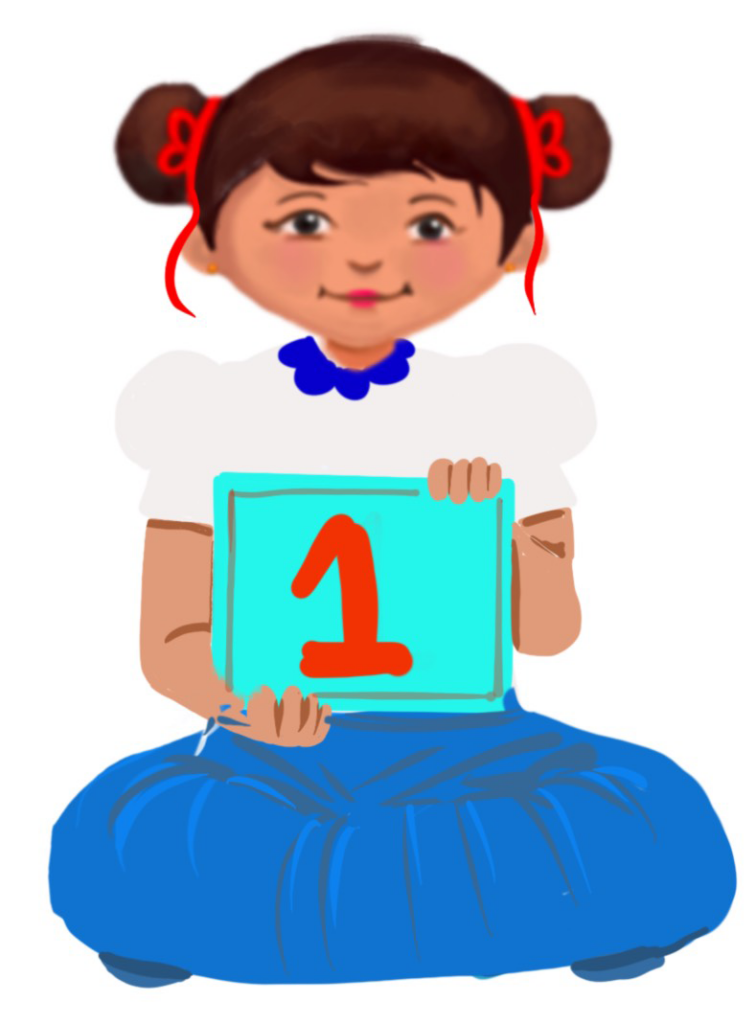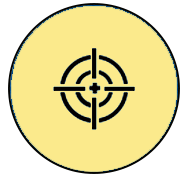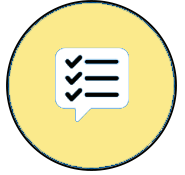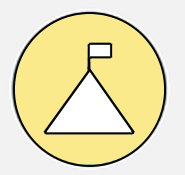
Computer Keyboard
Class 1
 Objective
Objective
Students will be able to…
- list the uses of the keyboard
- identify the cursor
- recognise the basic keys on the keyboard.
 Prerequisites
Prerequisites
| Here are some prerequisite skills to assess child readiness: 1. Tolerance to sit 2. Basic reading and writing skills 3. Ability to follow instructions 4. Good hand-eye coordination 5. Fine motor skills 6. Gross motor skills 7. Identification of letters 8. Identification of numbers 9. Concept – Up/Down, Right/Left |
Worksheet: Colour letters by code
Enlarged Worksheet: Colour letters by code
Worksheet: Left and Right Position
Enlarged Worksheet: Left and Right Position
Video: Letter Recognition Activity
Instructions to the Teacher:
Prepare a sheet of paper with the 26 alphabets. You can use cubes with letters printed on them or you can prepare letter cards cutout from thick cardboard sheet. Write the letters on each cardboard sheet. The teacher has to call out the letter name and the child has to place the correct letter card on the corresponding letter on the sheet as shown in the video.
Video: How to make a Dummy Keyboard
Worksheet: Recognising Letters
Enlarged Worksheet: Recognising Letters
 Goal
Goal
All
All children will know how to use a computer keyboard.
Some
Some children will be able to recognise the basic keys of the computer keyboard.
Few
Few children will be able to easily tell the functions of the keys of the computer keyboard.
Operational Definition:
All – This gives the goal, which is the minimum that the teacher must achieve for all students in the classroom.
Some – This gives the goal that the teacher may try to achieve for some students in the classroom who can achieve the suggested goal over and above the goal stated for ‘All’.
Few – This gives the goal that the teacher may try to achieve for few students in the classroom who can achieve the suggested goal over and above the goal stated for ‘Some’ and ‘All’.
Materials Required:
Technology
- An audio-enabled computer with an internet connection, smartboard projector and screen.
- All devices like laptops, tablets and desktop computers with accessibility features enabled.
- Screen readers like JAWS and NVDA.
- Large keyboards, built-in screen magnifiers, hearing aids, text-to-speech and speech-to-text software.
- Voice recognition software like Siri, Windows Speech Recognition, etc.
- Headsets.
- Student writing or typing tools.
Teacher Materials
- Whiteboard and markers or blackboard and chalk.
- Pre-teach vocabulary cards, sight words, communication cards, keyboard posters and worksheets.
- Lesson videos.
Student Handouts
- Handout 1: Communication Cards
- Handout 2: Vocabulary Cards
- Handout 4: Trace and Learn Card
- Handout 5: Yes or No Cards
- Handout 6: Thumbs Up and Down Card
- Handout 7: Worksheets
Print Preparation
The teacher will print, copy or laminate (wherever applicable):
- Communication Cards for students
- Trace and Learn Cards for students
- Vocabulary Cards for students
- Thumbs up and Thumbs down Card for students
- Yes or No Cards for students
- Pre-teach vocabulary cards, sight words
- Worksheets for students
Preparation for the Activity:
- All the learning and teaching materials needed for this lesson plan must be ready before the lesson begins.
- Ensure that there are enough copies for all children. Multiple copies can be made by photocopying too.
- Please have the assistive technologies and accessibility features ready for your inclusive classroom.
Setup for transacting the lesson:
This topic must be taught in the classroom or a computer lab.
 Notes to the Teacher
Notes to the Teacher
Begin the topic with a pre-assessment worksheet and pre-teach the vocabulary.
Introduce the concept of a computer keyboard as a tool to enter data into a computer.
Explain what a computer keyboard means and show them the keyboard.
Tell them that the keyboard is an input device.
Teach them that the keyboard acts like a pencil and is used to write on the computer.
Explain to the students about the cursor, using flashcards or showing it on the computer screen.
1. Expected Prior Knowledge
Awareness of the extent of student’s prior knowledge of the topic will help the teacher plan and deliver the lesson appropriately.
This could be assessed through the provided Pre-assessment worksheet.
Worksheets, Vocabulary words
LTM: Pre-teach Vocabulary Cards
LTM: Sight Words
LTM: Computer Keyboard Poster
LTM: Compter Keyboard Horizontal Poster
LTM: Enlarged Computer Keyboard Poster
Worksheet: Pre-Assessment
Enlarged Worksheet: Pre-Assessment
Worksheet: Match the Word
Enlarged Worksheet: Match the Word
Worksheet: Match the Word to the Picture
Enlarged Worksheet: Match the Word to the Picture
Video: The Blinking Line Cursor
2. Warm-Up
Write the word ‘keyboard ’ on the board.
1. Ask students to write down the first thing that comes to mind when thinking of the word ‘keyboard’.
Possible Answers: computer, piano, typing, harmonium, computer keyboard
2. Keyboard is used for…
Possible Answers: typing, writing, playing games, listening to music, watching cartoons
3. Ask, “Which keys will you use to type your name?” (The answer is alphabet)
4. Ask, “Which keys will you use to type your roll number?” (The answer is number)
Differentiation
- Students can write down answers in their notebooks or on a slip of paper and stick it on the corkboard.
- Students can choose to write their answers or communicate their responses verbally with a friend/teacher.
- Students can draw the word or point to the picture on the Communication Card (a Communication Card handout should be provided).
- The teacher should immediately praise the student with his/her name and reward the child.
LTM: Thumbs Up and Down
LTM: Yes or No Cards
LTM: Communication Cards
Worksheet: Vocabulary Card
Enlarged Worksheet: Vocabulary Card
Worksheet: Trace and Learn
Enlarged Worksheet: Trace and Learn
3. The Computer Keyboard!
Guided watching
Bring the attention of the students to the screen and say, “Let’s watch this video.”
Ask students to give a ‘thumbs up’ whenever they hear or see the word ‘keyboard’ in the video.
Play the video.
Video: The Computer Keyboard
Video: The Computer Keyboard ISL
Informal Assessment (After playing the video)
Ask, “What is a keyboard?”
If needed, prompt the children to come up with a definition using language from the video.
EXAMPLE: The computer keyboard is an input device used to type on the computer.
Write the term and definition on the board after students’ responses.
Ask, “Do we use the same keyboard for both – the computer and the piano?” (The answer is no)
Ask, “Does the computer keyboard have 26 letter keys?” (The answer is yes)
Ask, ”Does the computer keyboard have 9 number keys?” (The answer is no)
Ask, “Do we use the ‘spacebar’ key to provide space between the words?” (The answer is yes)
Ask, “Does the ‘enter’ key delete the letter on the right?” (The answer is no)
Worksheet: Informal Assessment
4. Keyboard Song!
A S D F G (Left hand)
Semicolon, L K J H (Right hand)
Z X C V B (Left hand)
Slash, Full Stop, Comma, M N (Right hand)
Let us type last line.
Q W E R T (Left hand)
P O I U Y (Right hand)
Always use your thumb for spacebar,
Don’t let your thumb finger travel away too far!
Video: Keyboard Song
Video: Keyboard Song ISL
Worksheet: Activity Sheet
Worksheet: Enlarged Activity Sheet
5. Story of Fingers
Once, the fingers of the hand were talking. The little finger said, “While doing namaskar, I am in the forefront. I am the most important!”
The ring finger said, “I am the most valuable. I wear beautiful rings.”
The middle finger said, “I am the tallest and the strongest. I am the head of the family!”
The forefinger said, “I am powerful. I point out mistakes. I warn people. I show directions to them and caution them. I am the boss!”
The thumb said, “I am the one who unites you all! I help in putting food into the mouth all day long. I am the one who holds you all together!”
All the fingers hugged each other. They understood that each one was important, but when they were united, they had strength!
The children can be told that two hands can do namaskar, clap, etc. One hand alone can wave, do a handshake, make a fist, hold a glass, etc. We have to live together.
Video: Story of Fingers
Video: Story of Fingers ISL
6. Adaptations and Modifications: Computer Keyboard
7. Assessment
Worksheet: Computer Keyboard
Enlarged Worksheet: Computer Keyboard
Worksheet: Colour the keys
Enlarged Worksheet: Colour the keys
Try Me: Keyboard-An Input Device
8. Assistive Technologies and Adaptive Devices
Assistive Technologies and Adaptive Devices
Teacher Resource Document
| Source and Attribution of images: All images used in the above Assets and Aids are originally created/licenced. |
| This digital material has been developed by the Sri Sathya Sai Vidya Vahini Inclusive Education, a unit of Sri Sathya Sai Central Trust, Prasanthi Nilayam, as a collaborative offering in the service of our nation. |